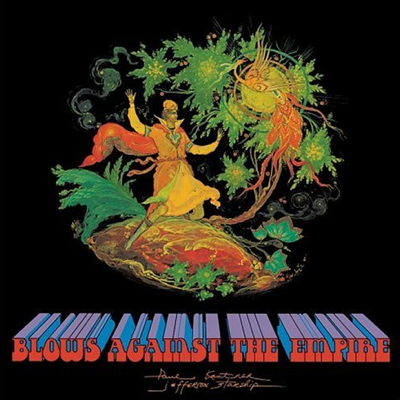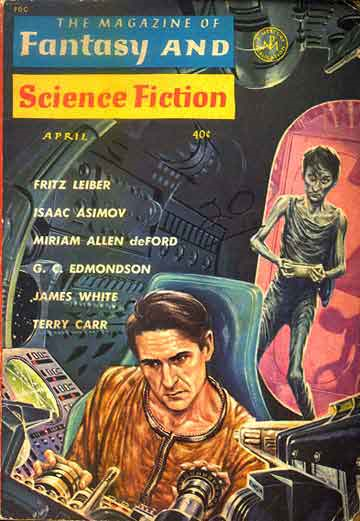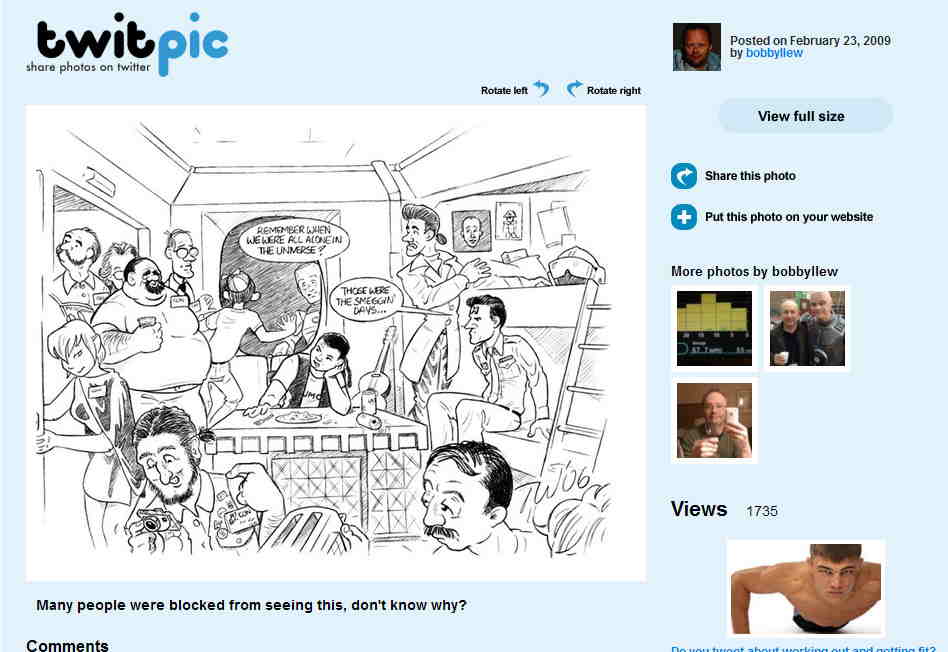(1) THRILLERS OF GENRE INTEREST. CrimeReads shows an interesting group of cross-genre thrillers will arrive in bookstores this year: “Speculative Murder Mysteries and Alternative History Thrillers Out in 2025”. Here’s a promising example.
Cory O’Brien, Two Truths and a Lie
(Pantheon, March 4)It’s hard to believe this is Cory O’Brien’s debut, given the sophisticated plotting and world-weary tone—Two Truths and a Lie already feels bound to be a classic. O’Brien channels the spirit of Hammett and Chandler in his futuristic ode to Chinatown and The Long Goodbye, set in a future Los Angeles mostly inundated with water and home to a wide variety of scrappy denizens, hustling con artists, and veterans of the AI wars (both human and machine). The scruffy antihero narrating me tale is a former drone operator turned fact checker who finds himself embroiled in a Byzantine plot featuring erased memories, manipulative rich people, and dark secrets, with more twists than a mid-century candy wrapper. The conclusion is logical, devastating, and necessary.
(2) FREE YOUR HEAD. [Item by Steven French.] Ed Finn, founder of the Centre for Science and the Imagination at Arizona State University has an interesting essay on the significance of science fiction in the magazine Issues in Science and Technology: “Step Into the Free and Infinite Laboratory of the Mind”.
Science fiction is a free, infinite laboratory of the mind that allows its audience to envision possible futures in context. By centering characters—people—instead of technologies, writers have to offer concrete answers to those nagging questions which can be so easy to gloss over when an invention or discovery exists only as a concept. Who will own it, use it, pay for it, maintain it? Where will it be installed or deployed? What does it look like, smell like, feel like? How does it actually work? Does it need to be plugged in? What if you drop a piece of toast into it? What else must be true in the future for this thing to exist? These questions create what I call speculative specificity: The craft of effective storytelling pushes authors and readers to play out second- and third-order consequences and to imagine the full context of a changed future.
(3) KIPPLE-IN-TRAINING. Shelfies, edited by Lavie Tidhar and Jared Shurin, “Takes a unique peek each week into one of our contributors’ weird and wonderful bookshelves.” A recent entry was “Shelfies #22: Nick Seeley”.
The shelf just over my workspace is something like my literary inbox, full of things I’m reading, things I want to read next, things I’m repeatedly revisiting, and a few curiosities. Most of them are new, the books I’m finding most interesting right now, but some have been on this shelf (or its equivalent, in other apartments) for years. I think I started Just Kids a decade ago, but found it too beautiful and heartbreaking to finish. It waits. Cat Fitzpatrick’s The Call Out has posed a similar challenge, though it’s only been there a few months.
The copy of Hugo Williams’ All the Time in the World was given me at the beginning of my junior year of college, more than a quarter century ago, by my uncle’s then-girlfriend. She had spent a lot of the previous summer hanging out with me and my high school buddies, smoking dope on the roof of my parents’ house, listening to The Sundays and Robyn Hitchcock and Gilmour-era Floyd on Walkman speakers, talking about life and dreams and travel. The book wasn’t the type of thing I usually read back then, but it grabbed me and never let go. The world Williams bummed his way through with that charming mix of naivete and insight felt so different from the one I’d heard about in terrifying American newscasts: somehow more hopeful, even as it emerged from the devastation of global war; inviting, vast, strange. Williams transformed my simple desire to GTFO of the DC suburbs into a wanderlust that eventually drove me halfway around the world myself, and never really let me go. This is one of the books I’ve dragged with me the whole way, along with my battered copies of The Hero With A Thousand Faces, my complete Eliot, and a few volumes of Stephen Dobyns’ poetry….
(4) SEEKING A SIGN IN VAIN. The Bookseller, the UK Bookseller Association’s near-weekly magazine, reports “Cultural sector ‘fears being sidelined’ on AI as UK refuses to sign ‘sustainable use’ statement at Paris summit”. (Behind a paywall.)
The cultural sector feared they might be sidelined during the Artificial Intelligence (AI) Action summit held in Paris on 10th and 11th February, and it seems their fears were well founded. In addition, the UK, along with the US, refused to sign a statement on the “inclusive and sustainable use of AI”.
On 7th February, 34,396 creators from all cultural fields in France signed a petition, launched by four collection agencies and published by the daily newspaper Le Parisien, to express their concern over copyright and the future of their professions in the face of the AI onslaught.
Also ahead of the summit, 40 international cultural organisations published a call for intellectual property to be respected. The International Charter on Culture and Innovation specified five principles: “AI model providers must respect fundamental rights, including copyright and related rights, in particular by diligently seeking and respecting the express wishes of rightsholders; effective and full transparency towards rightsholders on the copyrighted works and content used to train AI models; encouraging operators of AI models to seek licences, within the framework of authorisations duly negotiated with rightsholders; appropriate and fair remuneration for the use of works and content protected by intellectual property rights; and effective sanctions for non-compliance with these principles.”
The French Publishers Association (Syndicat National de l’Edition, SNE) was disappointed by the summit’s final Statement on Inclusive and Sustainable Artificial Intelligence for People and the Planet, which the UK and US refused to sign. SNE director Renaud Lefebvre regretted that it ignored the call “on which we worked actively so that all the actors converged on fundamental principles”, the French trade publication Livres Hebdo reported….
(5) AGAINST MIMICRY. In Christopher Norris’ commentary at The Bookseller he says “We Need a New Moral Right” to address AI. (Behind a paywall.)
The UK book trade stands at a crossroads. Artificial intelligence is reshaping the way content is created, marketed and consumed. While technological progress often brings opportunities, it also introduces challenges that demand urgent attention. One such challenge is the rise of AI-generated works that mimic the style of real authors. These works can be passed off as original, eroding the integrity of authorship and undermining the trust that underpins the book industry. Existing moral rights under UK copyright law – such as the right to attribution or the right to object to false attribution – fall short in addressing this issue. It is time for the industry to consider the introduction of a new moral right: the Right to Protection Against AI Mimicry….
(6) AUTHOR REMINDS ABOUT UK’S COPYRIGHT PROTECTION HISTORY. Also at The Bookseller, “Jeanette Winterson hits out at UK government over AI plans, arguing books shouldn’t be ‘fodder for Big Tech”, (Behind a paywall.)
…Winterson told The Bookseller: “I’m asking the British government today to protect the copyright of writers and artists in this country, and to understand that what we do is not just data. It’s not just content, and it’s certainly not there for big tech to read because they can.
“In 1710 Britain became the first country to operate a copyright law under Queen Anne. Later in the 19th century, Dickens fought for copyright because, although the world changes, piracy doesn’t, and the smash and grab attitude doesn’t. And writers, creators deserve better.”
She added: “Most people don’t make a fortune out of this stuff. They do it because it is their life’s work, their mission, their passion, and they deserve to be protected. It matters. I want you to reconsider so that we become more than fodder for big tech.”
Winterson’s criticisms of the government’s proposals on AI follow those by the bestselling authors Kate Mosse, who said an “opt-out solution won’t work”, and Richard Osman, who told the Guardian using copyrighted work without permission or payment is “theft” and will “harm” the creative industries…
(7) MEMORY LANE.
[Written by Cat Eldridge.]
Red Dwarf series (1988)
Thirty-seven years ago, the Red Dwarf series first aired on BBC Two. It was created by Doug Grant and Rob Naylor who based it off their Dave Hollins: Space Cadet that aired in the BBC Radio 4 series Son of Cliché show also produced by them.
As of two years ago, seventy-four episodes of the series have aired, including one feature-length special, concluding the twelfth series. The cost has had myriad changes with only Chris Barrie as Rimmer, Craig Charles as Lister, Danny John-Julesas as Cat and Robert Llewellyn as Kryten being there for the entire series.
Because Grant and Naylor not only directed the series but wrote the material and frequently changed everything as the series went along, critics came to be sharply divided on the series. The changes often caused them to seriously loathe Grant and Naylor. Or love them. No middle ground at all. Of what they said, Grant and Naylor “didn’t care one fuck”. That’s a direct quote.
BBC gave them two hundred fifty thousand pounds per episode by the end of the run of the series, about three hundred thirty thousand dollars currently. Not a big budget but enough. It’s now broadcasting on Dave which is a British free-to-air television channel owned by UKTV, a joint venture of the BBC and Thames TV.

(8) COMICS SECTION.
- Bizarro’s Cupid practices safe archery.
- Curses meets an editor.
- Dark Side of the Horse needs an editor.
- Dinosaur Comics somehow works hot dog and Platonic ideal into the same conversation.
- The Flying McCoys tells a kaiju to change its diet.
- Speed Bump finds a new resource.
(9) NEW METHOD FOUND OF INFERRING THE PRESENCE OF EXOPLANETS OR EXOMOONS. [Item by SF Concatenation’s Jonathan Cowie.] There is a new way of inferring the presence of exoplanets/exomoons. Daniel Yahalomi, David Kipping, Eric Agol and David Nesvorny, who are currently US based astronomers, have just published a paper as to a new method of inferring the presence of an ‘invisible’ planet or moon in a star system. In essence they are looking at transit (eclipse) data: that is data of a star dimming a little as an exoplanet passes in front of it as seen from the Earth. First a few basics…
A planet orbiting a star such that it periodically blocks (transits or eclipses) some of the star’s light as seen from the Earth will do so with a specific regularity. So far, literally thousands of exoplanets have been detected this way. However, the transit method only really works with planets orbiting close to their star: planets further away are less likely to transit and so be ‘invisible’. However, if a (single) planet is detected regularly orbiting a star then it should do so very regularly but around 70% of transit detections do not have this regularity! Now, if the transiting planet had a moon then this could cause a perturbation (or wobble or variation) in the period of the transiting planet we can see: in techno-speak this is known as the ‘perturbation of transit timing variations’ (PTTV). With an exo-moon this would likely (in most cases) have a high frequency: the Moon orbits the Earth many times in a year. Alas, many PTTVs don’t show this. So what is going on?

Now, if there are two planets transiting we can see them and can see how much starlight each blocks and so can work out their size and orbital distance. But suppose we cannot see the other (‘invisible’) planet then there are a myriad of possibilities as to the ‘invisible’ companion’s size and orbital distance from its star. What the astronomers have done is to calculate a lot of the possible combinations and depict these as a graph. Doing this creates a complex picture/pattern but one with two lines or ‘edges’. This then is the situation with two planets in a star’s system and one of them is invisible. What it means is that one visible and one invisible planet by themselves in a star system have a predicted range of PTTVs.
What the astronomers then did is to look at the planet systems from whom we can clearly see transits of two companion planets. Surprisingly, what they found was that there were over a dozen that had planets with PTTVs below the lower edge in their graph. This simply should not happen! What this means is that these two planet systems must have a third, ‘invisible’ party be it another planet or an exo-moon. The astronomers now have a way of inferring an invisible third planet or exo-moon in known two planet star systems even if only one planet is transiting.
What astronomers now need to do is to look at the 70% with PTTVs of the thousands of planets for whom we have transit data. There must be literally thousands of ‘invisible’ third planets or exo-moons whose presence we should be able to clearly infer.
If all this seems a little complicated, Brit astronomer based in the US, and team member, David Kipping, at the Cool Worlds has made 19-minute video on this. See also their paper: Yahalomi, D. A., et al (2024) “The Exoplanet Edge: Planets Don’t Induce Observable TTVs Faster than Half their Orbital Period”. Pre-print.
To summarise this all even further into a single sentence, what this does is to infer a three-body problem from a two-body system from a series of single body transits.
“From Wobbles to Worlds – Discovery of The Exoplanet Edge!” at Cool Worlds.
(10) WHAT’S LOST, DOC? ThePulp.Net talks about the script for “The lost Doc Savage movie” of the Seventies.
With the on-again/off-again possibility of a new movie or TV series based on the Doc Savage pulps seemingly always in the Hollywood news, it’s worth looking back at a Doc Savage movie that never was.
In summer 1978, the television network ABC was looking at a script for a TV movie based on the Man of Bronze’s adventures. The script, titled Doc Savage: The Mind Assassins, was being offered to the network by Universal Studios.
This script might have been lost forever had it not been for one Leon Manuel Jr. “I’ve had this script since 1978. Someone who knew I collected scripts found it in the trash and gave it to me,” Manuel said in a note.
That rescued script was written at the behest of producer Allan Balter by journeyman television writer Barry Oringer, who had scripted scores of episodes for classic TV series such as Ben Casey, The Virginian, The Fugitive, The Invaders, I Spy, Mannix, Medical Center, and Barnaby Jones.
Balter, who died in 1981, had written or produced for, among other TV programs, Mission: Impossible, Voyage to the Bottom of the Sea, The Six Million Dollar Man, and a pair of made-for-TV Captain America movies.
The Mind Assassins reads like what it is supposed to be: a 1970s action-adventure movie of the week….
(11) FLASH INSIGHTS. Rocky Watches Movies makes a promise: “Flash Gordon (1980): 20 Things You Never Knew!” Rocky could be right – for instance, I never knew that lead actor Sam Jones was discovered on The Dating Game.
Get ready to blast off into a world of mind-blowing trivia with our deep dive into the iconic 1980 film, Flash Gordon! From shocking behind-the-scenes secrets to hidden details you never noticed, we’re uncovering the ultimate truth about this campy sci-fi classic.
[Thanks to Cat Eldridge, BGrandrath, SF Concatenation’s Jonathan Cowie, Steven French, Kathy Sullivan, Teddy Harvia, Mike Kennedy, Andrew Porter, John King Tarpinian, and Chris Barkley for some of these stories. Title credit belongs to File 770 contributing editor of the day Thomas the Red.]














